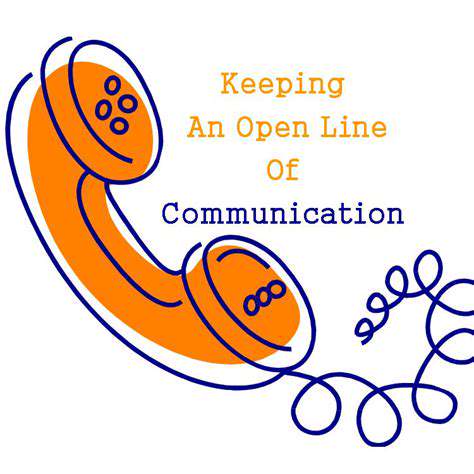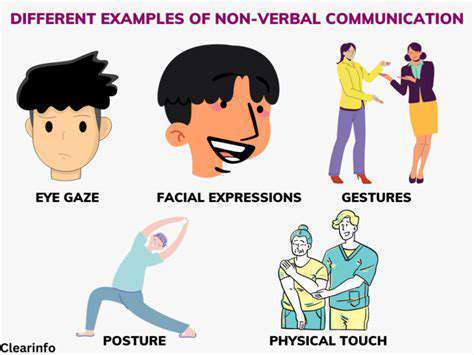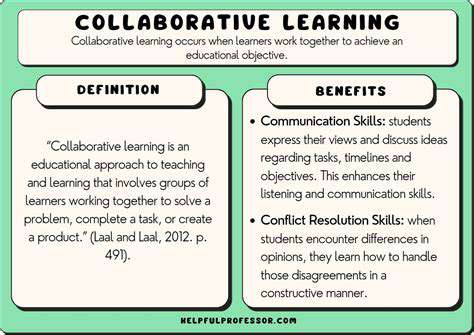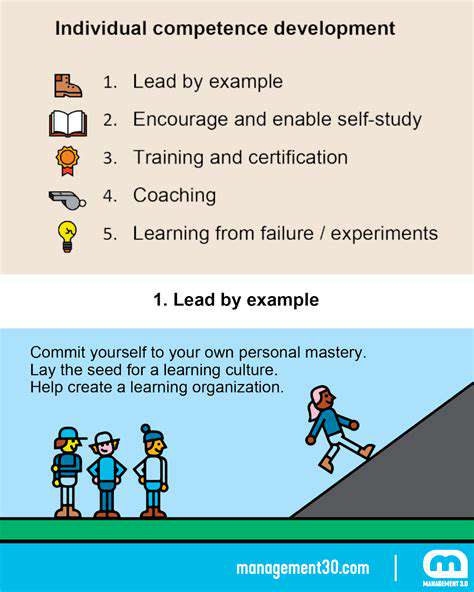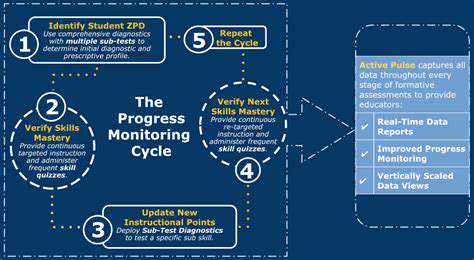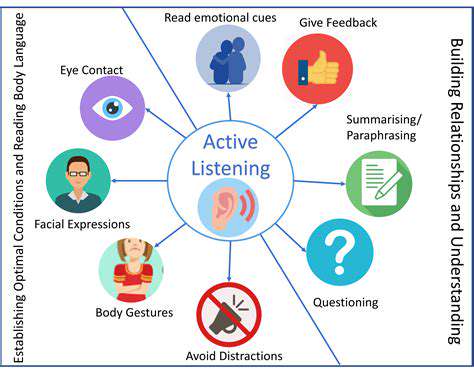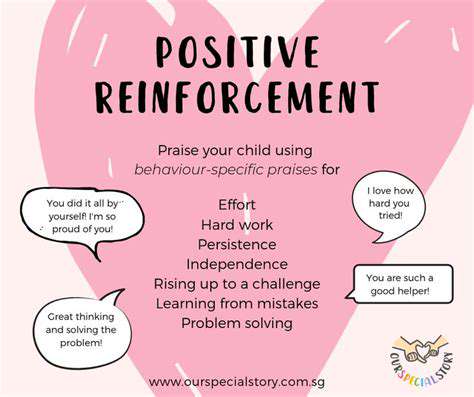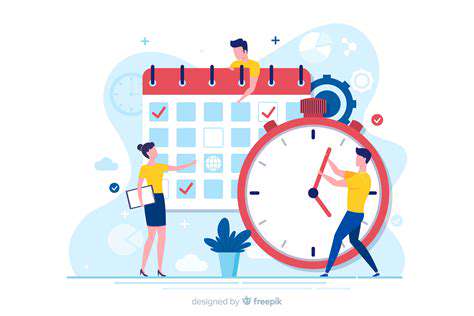The Ultimate Guide to Early Childhood Education Techniques
Table of contents
Play-based learning fosters creativity and lifelong learning through active engagement.
The Montessori approach emphasizes child-centered education and individualized learning plans.
Reggio Emilia promotes collaboration and community involvement in children's education.
HighScope utilizes hands-on experiences and the Plan-Do-Review process for active learning.
Integrating technology enhances personalized learning experiences for young children.
1. Play-Based Learning: The Heart of Early Education
Understanding Play-Based Learning
Play-based learning is an educational approach that emphasizes learning through play. Research from the National Association for the Education of Young Children (NAEYC) highlights that children learn best when they are engaged, active participants in their learning environments. This method goes beyond mere recreation; it integrates critical thinking and problem-solving into play scenarios.
Through structured and unstructured play, children develop essential skills, such as social interaction, language development, and cognitive abilities. Observations reveal that children who engage in play-based activities frequently demonstrate higher academic performance later in their schooling. By fostering creativity and curiosity, this approach helps lay a strong foundation for lifelong learning.
Implementation Strategies in Early Childhood Education
To effectively implement play-based learning in a classroom setting, educators should create a rich and stimulating environment that encourages exploration. Classrooms should be designed with various play stations that cater to different developmental skills. For example, a literacy corner might include books and storytelling props, while a science area could have simple experiments or nature observation tools.
Additionally, teachers can harness the power of guided play, where they facilitate play scenarios that are aligned with educational objectives. This means actively participating in children's play and asking open-ended questions that prompt critical thinking. It's crucial for educators to continuously assess children's interests and adapt learning activities accordingly, ensuring that each child's experience remains relevant and engaging.
2. The Montessori Approach: Child-Centered Learning
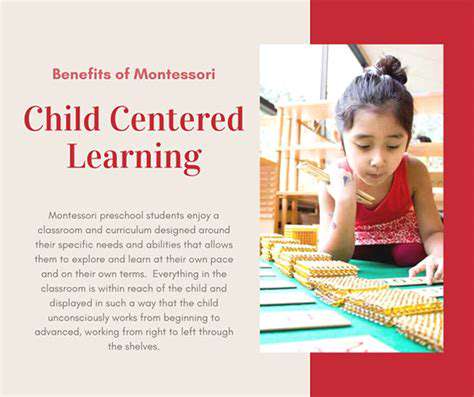
Understanding the Montessori Method
The Montessori method, developed by Dr. Maria Montessori in the early 1900s, emphasizes a Child-centered approach to education. This approach prioritizes the interests and developmental needs of the child, which fosters a love for learning. Unlike traditional education systems, which often adopt one-size-fits-all strategies, Montessori environments are designed to accommodate diverse learning styles.
Montessori classrooms typically feature mixed-age groups, allowing younger children to learn from older peers and vice versa. This not only promotes social skills but also builds self-esteem as children mentor each other. Additionally, the prepared environment in Montessori schools is filled with educational materials that encourage exploration and independence, paving the way for self-directed learning.
The Role of the Educator in Montessori
In Montessori settings, the role of the educator is fundamentally different from that in conventional classrooms. Rather than being the primary source of knowledge, educators act as guides. They observe children closely to identify their interests and readiness for new challenges, thus providing timely support. This method empowers children to take ownership of their learning journey, which can significantly enhance their motivation.
Furthermore, Montessori educators are trained to recognize each child's unique potential. They create individualized learning plans based on extensive assessment and careful observation, helping to foster a classroom environment where every student can succeed. As a result, children are encouraged to work at their own pace, allowing for deeper engagement with the material.
Benefits of the Montessori Approach
- Encourages independence and self-discipline.
- Fosters a strong sense of community among students.
- Promotes critical thinking and problem-solving skills.
The benefits of the Montessori approach extend beyond academic success. Studies indicate that children educated in Montessori settings tend to develop greater executive function skills, which are crucial for managing time, tasks, and emotions. A study conducted by the University of Northern Iowa showed that Montessori students outperformed their peers in creativity and social problem-solving.
Moreover, the emphasis on hands-on learning helps children retain information better and understand concepts more deeply. This experiential learning aligns with the brain's natural way of processing information, as highlighted by educational research. Parents often find that Montessori graduates exhibit a lifelong love for learning, which is arguably one of the greatest gifts of this educational philosophy.
3. The Reggio Emilia Approach: Community and Collaboration
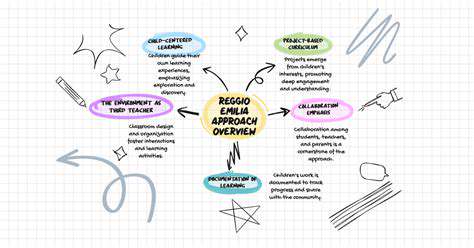
Understanding the Foundations of the Reggio Emilia Approach
- Focuses on children's potential to construct their own learning.
- Encourages collaboration among teachers, children, and families.
- Efficiency of community involvement in education.
The Reggio Emilia approach is built on the conviction that Children are capable learners and should be actively involved in their own educational journey. This philosophy emphasizes that learning is a _collaborative_ and _interactive_ process, where children explore their interests and ideas. By allowing students the freedom to express themselves, educators are able to tap into their innate curiosity, fostering a rich learning environment.
A key component of this approach is community engagement. Strong partnerships among educators, families, and the community enhance the learning experience. This integration not only supports the children but also cultivates a deeper sense of belonging and pride within the community, as everyone has a stake in the educational process.
Role of Educators in the Reggio Emilia Framework
In the Reggio Emilia approach, educators are viewed not just as teachers but as facilitators of learning. Their role is to observe, document, and participate in children's learning experiences. This active involvement allows educators to respond to children's needs effectively. They act as guides, assisting children in navigating their learning pathways while also encouraging them to express their thoughts creatively.
Educators are also tasked with maintaining an environment that is rich in resources and opportunities for exploration. This includes thoughtfully arranging materials and spaces that reflect children's interests and promote collaborative learning. Studies indicate that such environments significantly enhance cognitive and social skills during the early years, making intentional space preparation essential.
The Importance of Family and Community Engagement
Family involvement is crucial in the Reggio Emilia approach. It's essential that parents feel included in the learning process, as their insights and contributions enrich the overall educational experience. Schools often host regular meetings and workshops designed to engage parents in their children's learning, fostering a community atmosphere where everyone collaborates to support the child’s growth.
Additionally, partnerships with local organizations and businesses can expand learning beyond the classroom walls. By integrating community resources, children can experience a more holistic education that is deeply connected to their world. This practical application of learning encourages community involvement, instilling a sense of social responsibility and civic engagement from a young age.
Promoting Collaboration in the Classroom
Collaboration in the Reggio Emilia approach extends beyond teacher-student involvement; it encompasses the entire classroom culture. Children are encouraged to work together on projects, sharing their ideas and talents, which fosters essential social skills. When children collaborate, they learn to negotiate, problem-solve, and appreciate diverse perspectives. These experiences lay the groundwork for healthy interpersonal relationships as they grow.
Creating a climate of collaboration is essential in developing teamwork skills. Activities such as group discussions and joint art projects are employed to facilitate this social interaction. Research has shown that collaborative learning not only enhances children’s social competencies but also boosts their academic performance. In the Reggio Emilia context, teamwork is thus seen as a vital component of a child’s education.
4. The HighScope Educational Approach: Active Learning Framework
Understanding the Key Principles of HighScope
The HighScope educational approach is grounded in key principles that shape its framework for active learning. One of the core tenets is the belief that children learn best through hands-on experiences. Recognizing that direct interaction with materials encourages exploration and understanding, HighScope systematically integrates this principle into its curricula. This approach to learning emphasizes that active engagement is essential for cognitive, emotional, and social development.
An essential element of this educational method is the “Plan-Do-Review” process, which encourages children to plan their activities, engage in them, and then reflect on what they learned. Research shows that this cycle not only fosters self-regulation but also enhances Critical thinking skills essential for lifelong learning.
The Role of Adult-Child Interaction
In the HighScope framework, adult interaction is not merely a supervisory role; it plays an integral part in facilitating learning. Educators are trained to observe children closely, assess their readiness, and engage them in meaningful conversations that extend their understanding. This dynamic interaction helps children clarify their thoughts and encourages problem-solving skills. A well-trained teacher knows how to scaffold these interactions to effectively support each child's learning journey.
Curriculum Components and Structure
The HighScope curriculum is rich and comprehensive, featuring eight content areas, including language and literacy, mathematics, social studies, and the arts. Each area supports a holistic educational experience that nurtures various developmental domains simultaneously. Specific learning objectives guide educators in fostering essential skills through diverse activities, ensuring a balanced approach to child development.
Moreover, the structure is flexible enough to accommodate diverse learning needs and preferences. Teachers can adapt their lesson plans based on the children's interests and developmental stages, providing a personalized learning environment that encourages all children to thrive.
Data on Effectiveness and Outcomes
Numerous studies have examined the effectiveness of the HighScope approach. Research conducted by the HighScope Educational Research Foundation indicates that children who engage in HighScope programs demonstrate significant growth in academic and social skills. For instance, a longitudinal study highlighted that children from socioeconomically disadvantaged backgrounds showed remarkable improvements in literacy and mathematics when participating in HighScope education.
Incorporating Play in Learning
Play is at the heart of the HighScope approach, viewed as a vehicle through which learning occurs. By allowing children to choose their activities and engage in self-directed play, they develop critical thinking, creativity, and collaboration skills. This guided play promotes higher-order thinking as children negotiate roles, solve problems, and create their narratives through interaction with peers and materials.
Administrative Support and Teacher Training
Successful implementation of the HighScope approach relies heavily on administrative support and effective teacher training. Administrators must commit to ongoing professional development to ensure educators are equipped with the necessary skills and knowledge to deliver the curriculum effectively. Regular workshops and training sessions help teachers remain updated on best practices and enhance their teaching methodologies.
Suggestions for Parents and Educators
Parents and educators can amplify the effectiveness of the HighScope approach by fostering a strong home-school connection. Sharing insights about children's interests and progress can provide a more cohesive educational experience. Additionally, parents can create enriching environments at home that align with the principles of active learning by providing open-ended materials and opportunities for choice in play.
5. Incorporating Technology in Early Childhood Education
Understanding Digital Tools for Young Learners
In recent years, digital tools like tablets and educational apps have gained popularity in early childhood education settings. Research by the Joan Ganz Cooney Center indicates that 75% of preschool teachers use technology daily to enhance learning. These tools provide interactive experiences that are not only engaging but also tailored to individual learning styles. For instance, a child reluctant to engage with physical books may find a digital storybook more captivating, facilitating a love for reading through a different medium.
Moreover, educational platforms like ABCmouse and Khan Academy Kids offer a variety of activities designed to reinforce foundational skills in literacy, mathematics, and science. These platforms employ gamification, which has been shown to boost motivation and retention among young learners. By leveraging technology, educators can create a more personalized learning experience that responds to each child's pace and interests, which is a critical factor in early education.
The Role of Teacher Training in Technology Integration
To effectively integrate technology into early childhood education, comprehensive Teacher Training is Essential. According to the National Association for the Education of Young Children (NAEYC), teachers equipped with proper training are more likely to incorporate technology in meaningful ways that enhance learning outcomes. Workshops and training programs focused on technology use help educators understand the best practices for selecting age-appropriate applications and digital resources.
Furthermore, ongoing professional development ensures that educators stay current with rapidly evolving technologies and pedagogical strategies. Institutions should encourage staff to share experiences and collaborate on integrating technology, creating a community of practice that fosters innovation in the classroom. Ultimately, well-trained teachers can harness the potential of technology effectively, turning digital tools into valuable assets in the educational journey of young children.
Read more about The Ultimate Guide to Early Childhood Education Techniques
Hot Recommendations
- Affordable Early Childhood Education Solutions
- How to Share Parenting Responsibilities Equally
- How to Identify and Address Teen Depression Early
- How to Teach Kids Emotional Awareness
- Strategies for Cultivating Emotional Intelligence in Early Childhood
- Step by Step Early Childhood Education Guide
- Balancing Parental Roles: Strategies for Effective Co Parenting
- How to Use Positive Language for Better Child Behavior
- How to Create a Distraction Free Study Environment
- Understanding Teen Behavior: Counseling Tips for Parents

